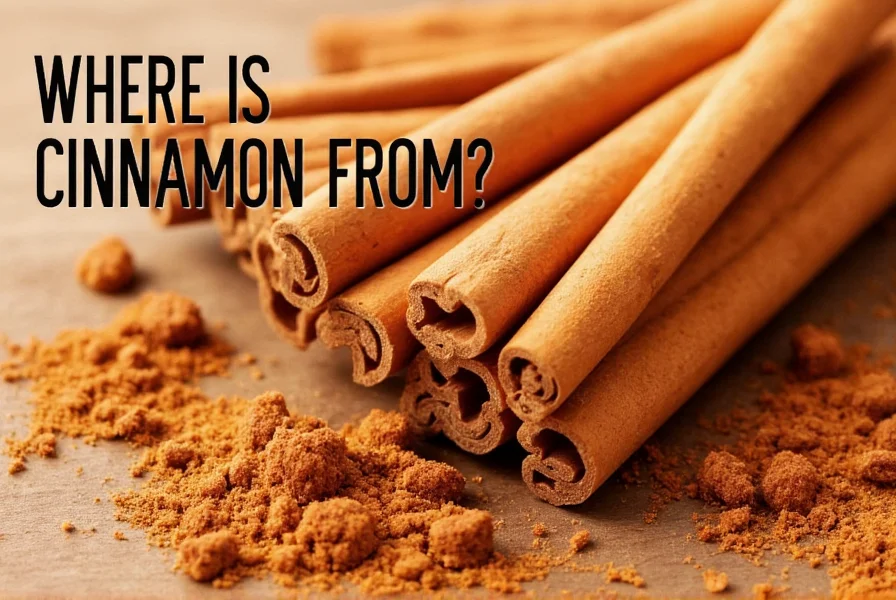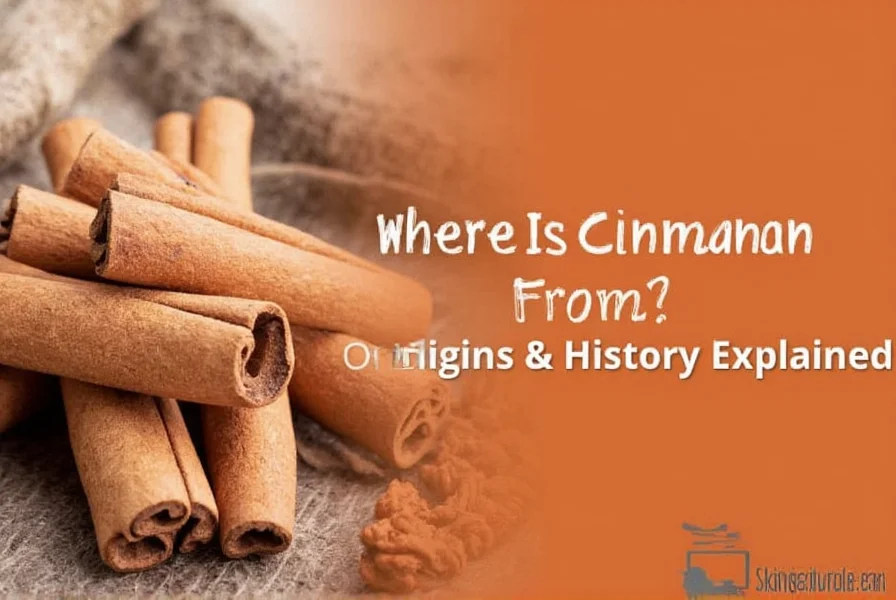For centuries, this fragrant spice has captivated civilizations with its warm, sweet flavor and remarkable versatility. Understanding where cinnamon originates reveals a fascinating journey through history, geography, and botany that continues to shape global trade today.
The Historical Roots of Cinnamon
Cinnamon's story begins thousands of years ago in the tropical forests of South Asia. Ancient Egyptians used it as early as 2000 BCE for embalming and as a flavoring agent. The spice became so valuable in medieval Europe that it was considered more precious than gold. Arab traders controlled the cinnamon trade for centuries, creating elaborate myths about its origins to protect their lucrative monopoly.
Types of Cinnamon and Their Geographic Origins
Not all cinnamon is created equal. The market features several varieties, each with distinct characteristics and growing regions:
| Type of Cinnamon | Primary Growing Regions | Distinct Characteristics |
|---|---|---|
| Ceylon Cinnamon (True Cinnamon) | Sri Lanka, Madagascar, Brazil | Lighter color, delicate flavor, multiple thin layers |
| Cassia Cinnamon | China, Indonesia, Vietnam | Dark reddish-brown, stronger flavor, single thick layer |
| Saigon Cinnamon | Vietnam | Highest oil content, intense flavor |
| Malabar Cinnamon | India | Moderate sweetness, medium intensity |
Ceylon Cinnamon: The True Spice
Ceylon cinnamon, often called "true cinnamon," primarily grows in Sri Lanka, which produces about 80% of the world's supply. This variety comes from the Cinnamomum verum tree, native to the island formerly known as Ceylon. Sri Lankan cinnamon features a delicate, complex flavor with citrus notes and contains significantly less coumarin than Cassia varieties, making it safer for regular consumption.

Cassia Cinnamon: The Common Variety
When most Americans reach for cinnamon at the grocery store, they're likely getting Cassia cinnamon. This variety, from the Cinnamomum cassia tree, originates in southern China but is now predominantly cultivated in Indonesia. Cassia has a stronger, more pungent flavor and contains higher levels of coumarin, which can be harmful in large quantities. Indonesia currently supplies approximately 60% of the global Cassia cinnamon market.
The Cinnamon Harvesting Process
Cinnamon production begins when farmers select mature trees (typically 2-3 years old) and cut them near ground level. The process of transforming bark into the familiar spice involves several precise steps:
- Workers remove the outer bark to expose the inner bark layer
- They carefully separate the inner bark using specialized tools
- The bark strips are left to dry, during which they naturally curl into quills
- After drying, quills are cut to standard lengths and graded
- Lower grades are ground into powder for commercial use
This traditional harvesting method has changed little over centuries, though modern processing techniques have improved efficiency while maintaining quality.
Modern Cinnamon Production and Trade
Today, global cinnamon production exceeds 50,000 metric tons annually. Sri Lanka remains the leading producer of Ceylon cinnamon, while Indonesia dominates Cassia production. The spice trade has evolved from ancient caravan routes to sophisticated global supply chains, yet many small-scale farmers still practice traditional cultivation methods passed down through generations.
Understanding where cinnamon comes from connects us to a rich tapestry of cultural exchange and economic history. Whether you're sprinkling it on morning oatmeal or using it in traditional medicine, recognizing its origins enhances appreciation for this remarkable spice.
Frequently Asked Questions
What is the difference between Ceylon and Cassia cinnamon?
Ceylon cinnamon (Cinnamomum verum) has a lighter color, delicate flavor, and multiple thin layers that form tight quills. It contains significantly less coumarin than Cassia. Cassia cinnamon (Cinnamomum cassia) is darker, has a stronger flavor, and forms a single thick layer. Most supermarket cinnamon in the United States is Cassia, not Ceylon.
Which country produces the most cinnamon?
Indonesia is currently the world's largest producer of cinnamon, primarily of the Cassia variety. Sri Lanka ranks second overall but is the leading producer of Ceylon cinnamon, accounting for approximately 80% of global Ceylon production. China and Vietnam also contribute significantly to worldwide cinnamon supplies.
Can you grow cinnamon trees outside tropical regions?
Cinnamon trees require tropical conditions to thrive—high humidity, consistent warmth (70-95°F), and abundant rainfall. While you can grow cinnamon trees in containers in temperate climates, they won't produce harvestable bark unless maintained in greenhouse conditions that mimic their native tropical environment. Commercial production remains limited to tropical regions near the equator.
Why is Ceylon cinnamon more expensive than other types?
Ceylon cinnamon commands higher prices due to its more labor-intensive harvesting process, lower coumarin content making it safer for regular consumption, and delicate flavor preferred by gourmet chefs. The production process requires more skill and yields less spice per tree compared to Cassia varieties. Additionally, authentic Ceylon cinnamon remains primarily produced in Sri Lanka using traditional methods.
How can I tell if my cinnamon is Ceylon or Cassia?
Ceylon cinnamon appears as multiple thin, papery layers forming a soft, hollow tube that's easy to crumble. It has a lighter brown color and delicate fragrance. Cassia cinnamon forms a single thick, hard layer that's difficult to break and has a darker reddish-brown color with a stronger aroma. When in doubt, check packaging labels or purchase from reputable suppliers who specify the cinnamon variety.











 浙公网安备
33010002000092号
浙公网安备
33010002000092号 浙B2-20120091-4
浙B2-20120091-4